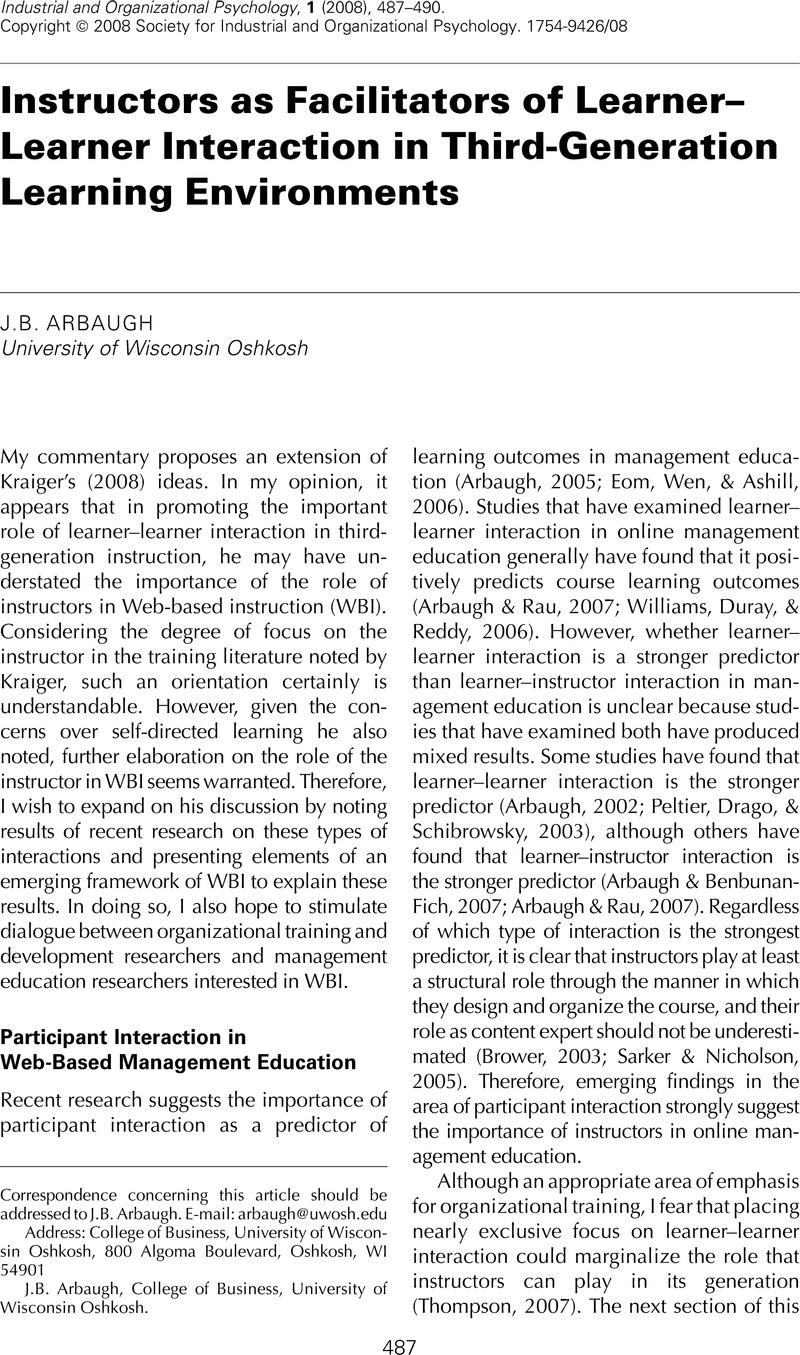Crossref Citations
This article has been cited by the following publications. This list is generated based on data provided by Crossref.
Bedwell, Wendy L.
and
Salas, Eduardo
2008.
If You Build It, Will They Interact? The Importance of the Instructor.
Industrial and Organizational Psychology,
Vol. 1,
Issue. 4,
p.
491.
Kraiger, Kurt
2008.
Third-Generation Instructional Models: More About Guiding Development and Design Than Selecting Training Methods.
Industrial and Organizational Psychology,
Vol. 1,
Issue. 4,
p.
501.
Noe, Raymond A.
Tews, Michael J.
and
McConnell Dachner, Alison
2010.
Learner Engagement:A New Perspective for Enhancing Our Understanding of Learner Motivation and Workplace Learning.
Academy of Management Annals,
Vol. 4,
Issue. 1,
p.
279.
Noe, Raymond A.
Tews, Michael J.
and
McConnell Dachner, Alison
2010.
Learner Engagement:A New Perspective for Enhancing Our Understanding of Learner Motivation and Workplace Learning.
Academy of Management Annals,
Vol. 4,
Issue. 1,
p.
279.
Wan, Zeying
Compeau, Deborah
and
Haggerty, Nicole
2012.
The Effects of Self-Regulated Learning Processes on E-Learning Outcomes in Organizational Settings.
Journal of Management Information Systems,
Vol. 29,
Issue. 1,
p.
307.
Clarke, Thomas
Lindorff, Margaret
and
McKeown, Tui
2013.
An aid to transition? The perceived utility of online resources for on‐campus first year management students.
Education + Training,
Vol. 55,
Issue. 4/5,
p.
414.
Magni, Massimo
Paolino, Chiara
Cappetta, Rossella
and
Proserpio, Luigi
2013.
Diving Too Deep: How Cognitive Absorption and Group Learning Behavior Affect Individual Learning.
Academy of Management Learning & Education,
Vol. 12,
Issue. 1,
p.
51.
Kim, Minjung
2015.
Korean EFL Students’ Interactional Challenges and Ways to Overcome Them in Blended Learning.
Multimedia-Assisted Language Learning,
Vol. 18,
Issue. 2,
p.
59.



